Swimming For All, Now Surfing: A Wild Boar Spotted on the Danube
September 3, 2022 - You’ve seen tourists of all nationalities, you have even seen a deer swimming in the Adriatic. Move over everyone, wild boars have got places to be. The summer might be on its way out, and the humans and animals visiting the Adriatic coast are enjoying the final weeks of sunny beach days. The Adriatic is not the only body of water where you can have some fun, though. It has never occurred to us before, but is looks like the Danube might be good for surfing. At least this wild boar thinks so.
And it is not only the Croatian Danube that hides many gems. This time in Serbia, in Belgrade, a wild boar went surfing on what looked like a wooden board. As reported by Espreso, the pictures were taken by random passers-by and shared on Facebook in the group Beograd bez maske (Belgrade without a mask). It was then shared on Reddit, in r/AnimalsBeingGeniuses, by u/djukanovics27. Head on there for some random Saturday entertainment.
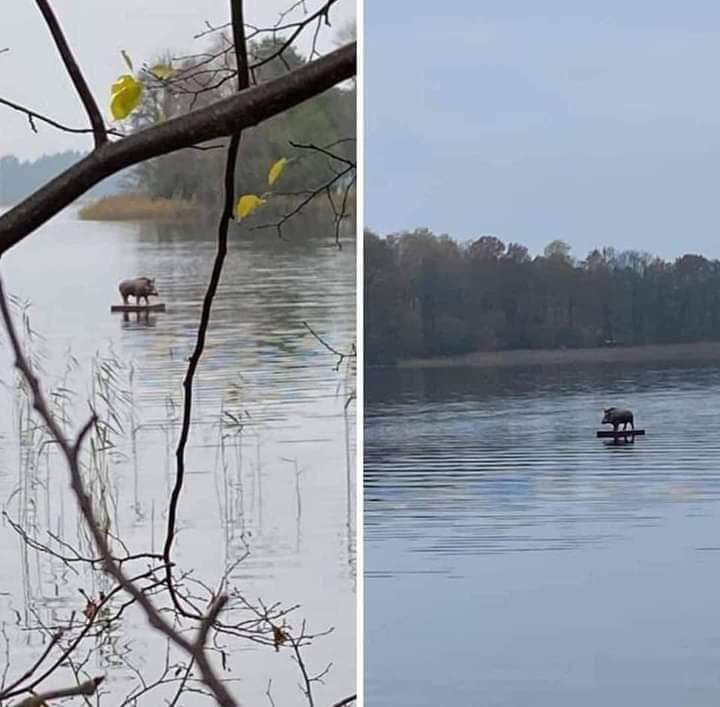
Facebook Group Beograd bez maske
So boars are turning out to be fairly interesting with a diverse range of interests. With the ability to swim for up to 12 hours straight, this beneficial physical activity seems to be quite high on the scale of their preferences. One even made a lengthy journey from Brač to Split.
Last, but not least, as previously written on TCN, a deer was spotted going for a dip in the Adriatic, at the Pokonji Dol beach on Hvar. It ran down the beach, tested the water, and jumped in for a plunge! It was a hot day, after all.
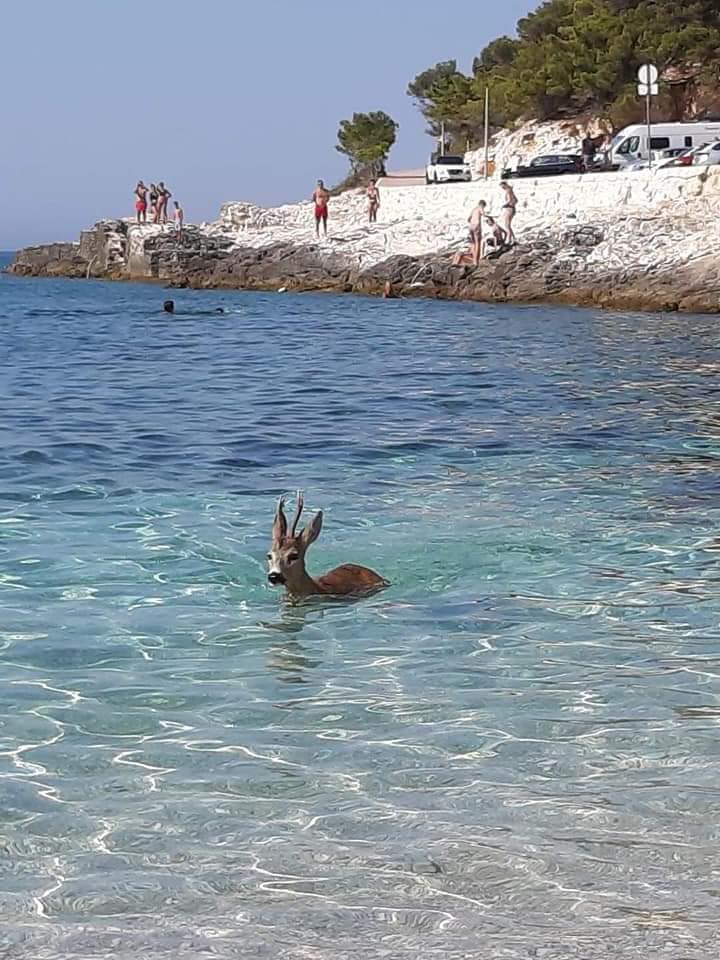
Nada Kordic Bezic
Who knows, maybe this is the dawn of a brand new series on TCN? Stay tuned.
In the meantime, for more, make sure to check out our dedicated Lifestyle section.
Best Beaches in Slavonia - Freshwater Paradise
May 12, 2022 - Summer is on the horizon, temperatures are higher and people are already planning how to cool down in the coming hot months. Unfortunately, not everyone can afford or reach the Adriatic coastline for much-deserved relaxation. However, Croatia has countless beautiful rivers and lakes used for swimming and recreation and Slavonia is full of those. A look into the best beaches in Slavonia.
As mentioned before, some people living outside of regions located near the Adriatic coast can’t afford or travel great distances for the ultimate Croatian summer. Because of those limitations, people needed to find ways to cool themselves and relax in their cities during unbearably hot months. Slavonia is definitely one of those regions. Older Slavonians will remember those summers decades ago when only a few families could afford to go to the Adriatic coast, after saving money all year, and others “less fortunate ones”, would go to rivers and lakes near their hometown. Those swimming places were made up on the go - “beaches” were mostly covered with untouched nature and unexplored terrains. Let’s just say they weren’t particularly safe but after a few accidents and realizations that structured swim places can be profitable and safe havens for families with kids, local authorities started investing in swimming and recreational infrastructure on those lakes and rivers. Water quality began to be reviewed for swimmers and after tests showed that the quality is excellent, the building could start. Without further ado, these are the best beaches in Slavonia.
“Copacabana” on Drava River in Osijek - “Kopika”
The list of best beaches in Slavonia starts with non-other than “Kopika”. One of the most popular river beaches in Slavonia, this is one of the swimming places in Slavonia that you can’t miss. Beach that offers views of iconic places in Osijek like Tvrđa, co-cathedral of St Peter and St Paul, Hotel Osijek, and the Bridge of Youth? Amazing. Since 2020, the beach and recreation center went through a lot of renovations and “Kopika” will shine in its new guise this summer. Modern pools, showers, cabins, and many more, make this beach unmissable this summer.
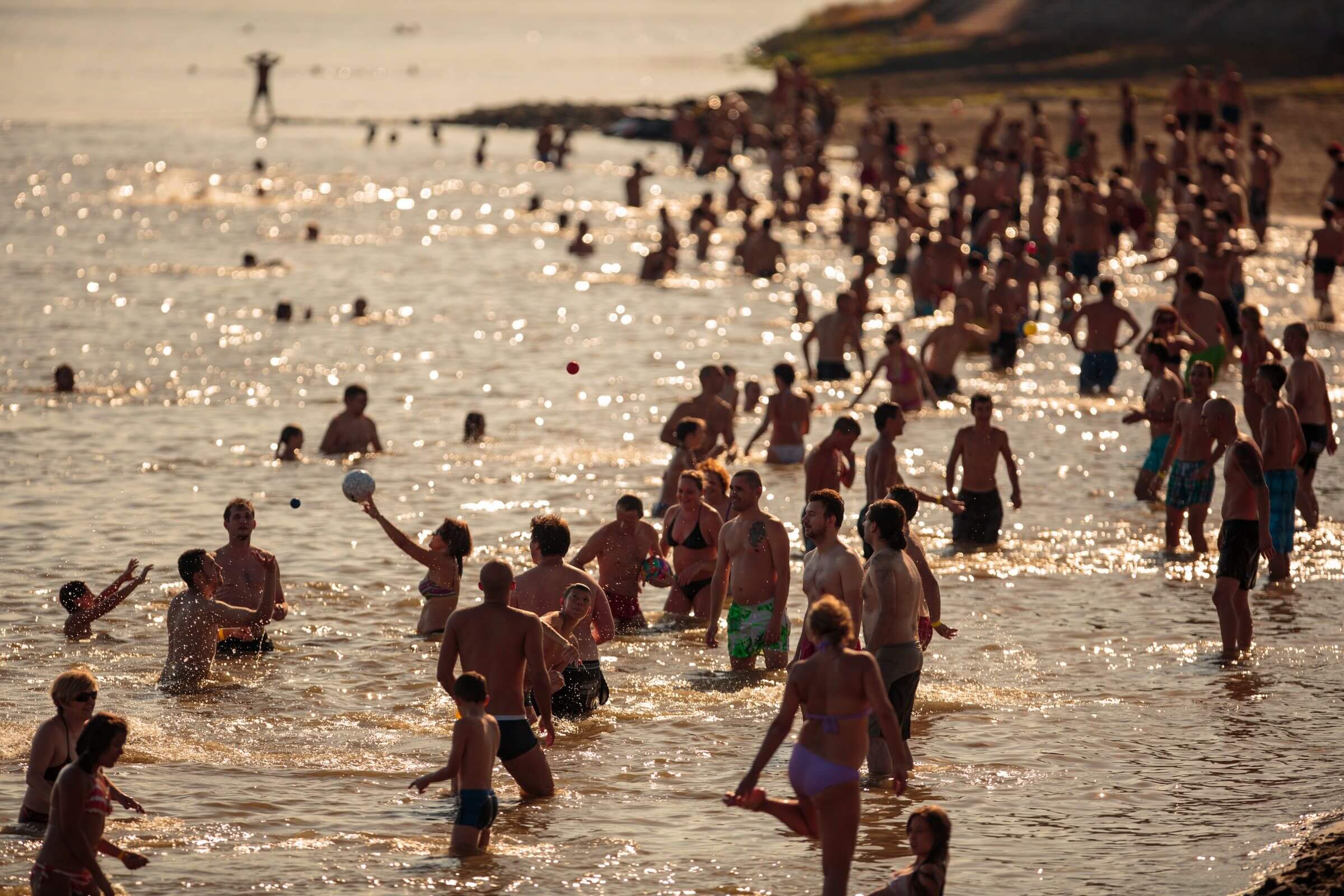
"Kopika" beach in Osijek (image credits: Mario Romulić)
Križnica Island on Drava River
This island is located on the Drava River near the small town of Pitomača, the westernmost municipality in Virovitica - Podravina County. Once the border between the Kingdoms of Croatia and Slavonia, this ancient island was the last one in the historic Pannonian Sea and its sandy beach attracts swimmers and recreationalists all over the country. Its bike routes, local cuisine, and natural private retreat make this river beach one of the best in the country and it’s an unmissable place to visit for refreshments and relaxation.
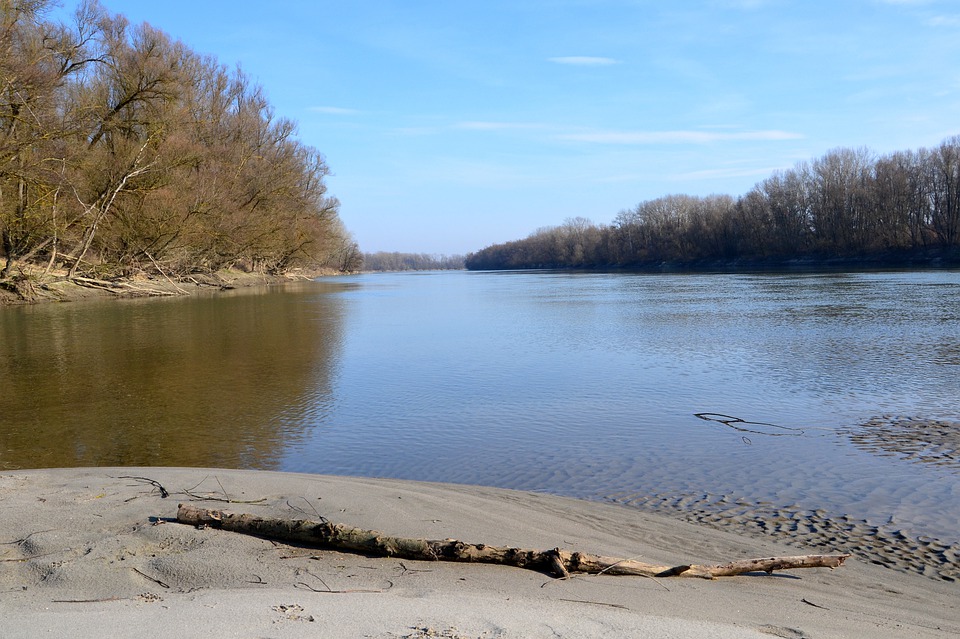
Križnica Island on Drava River (image credits: glaspodravine.hr)
Poloj Sports and Recreation Center
Apart from the Drava, the Sava River and its Poloj beach takes the crown as one of the most beautiful beaches in Europe. During summer, this beach attracts plenty of swimmers in need of refreshments. The white sand beach that can compete with some on the Adriatic coast, offers a lot of content - sandy fields for volleyball, futsal, places for barbecue, bike and pedestrian routes, and many more. Slavonski Brod and its surroundings is an amazing place for Digital Nomads and other tourists because it offers everything for everyone. So, visit this amazing place during summer, you won’t regret it.
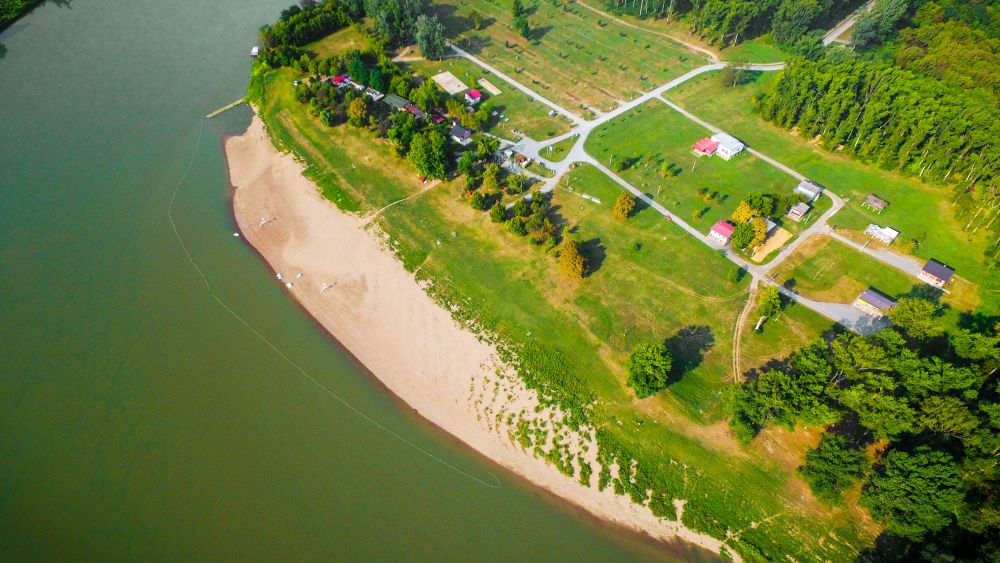
Beach Poloj on Sava River, Slavonski Brod (image credits: Alen Vrlazić/tzbpz.hr)
Lakes Banja in Vinkovci
Once upon a time, these two artificial lakes had different usage. More precisely, it was used for clay excavations for a brick factory back in the day and only brave men would go and swim there. However, in 1997, the realization of the potential these lakes have for sport, recreation and relaxation hit, and since then, Lakes Banja became a popular swimming place for residents of Vinkovci. The amazing quality of water and clean and tidy beaches are a perfect place for fishermen and people who want to have a proper swim. After that, barbecue, beer, and an amazing time.
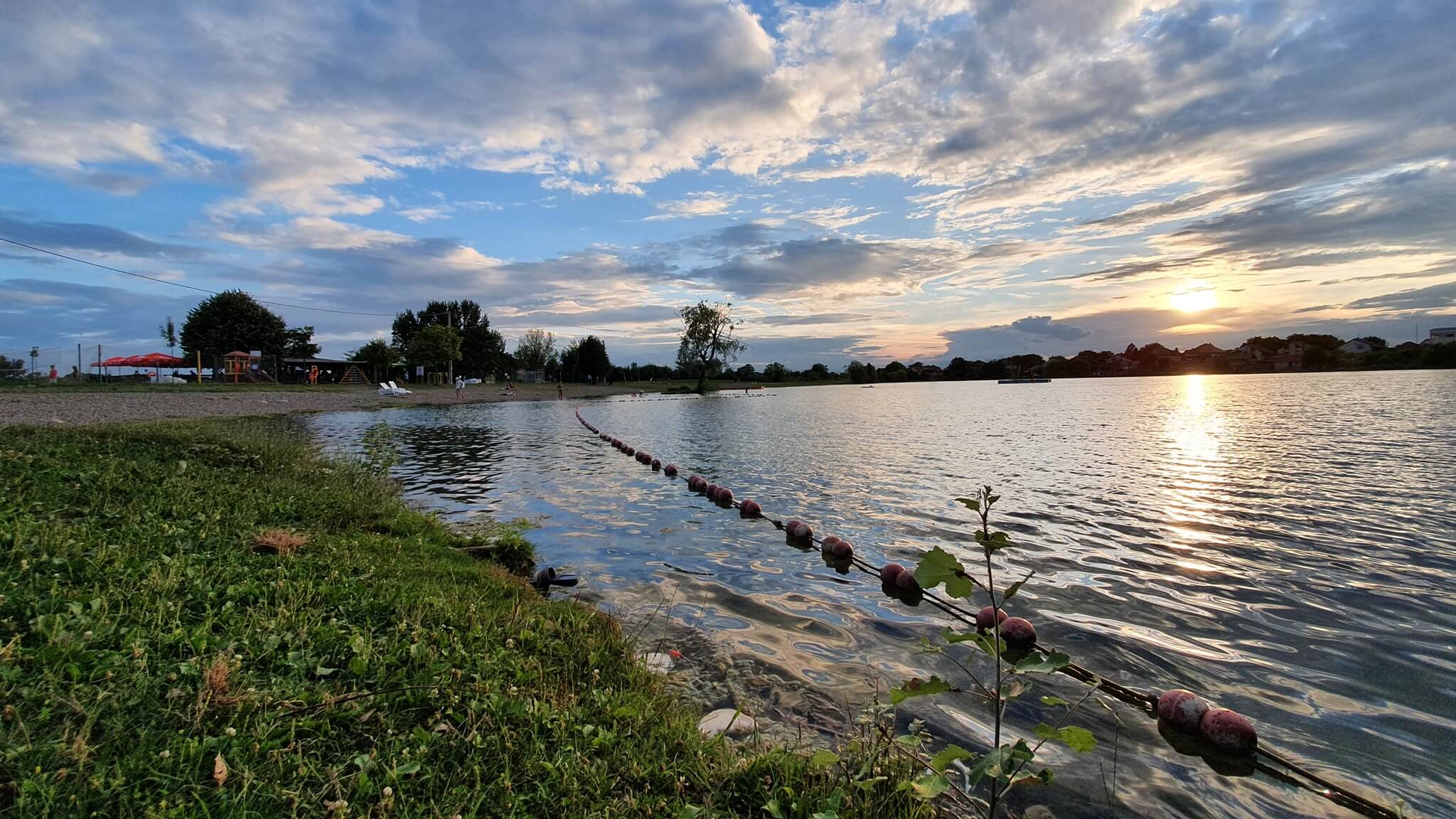
Lakes Banja in Vinkovci (image credits: Banja Vinkovci/Facebook)
Ada Island on the Danube River in Vukovar
Ada is a beautiful Croatian river island on the Danube River covered in a sandy beach and it’s a favorite swimming place in the city of Vukovar. Only 10 minutes away from cities center by boat and ranked among the ten most beautiful and interesting beaches in Croatia located along rivers and lakes. All those interested in peaceful vacations or maybe active vacations and adventures will surely find something for themselves. Amazing tourist offer that includes boat tours, volleyball on sand, and a gazebo full of refreshing drinks under the shade of the forest, makes this one of the best beaches in Slavonia.
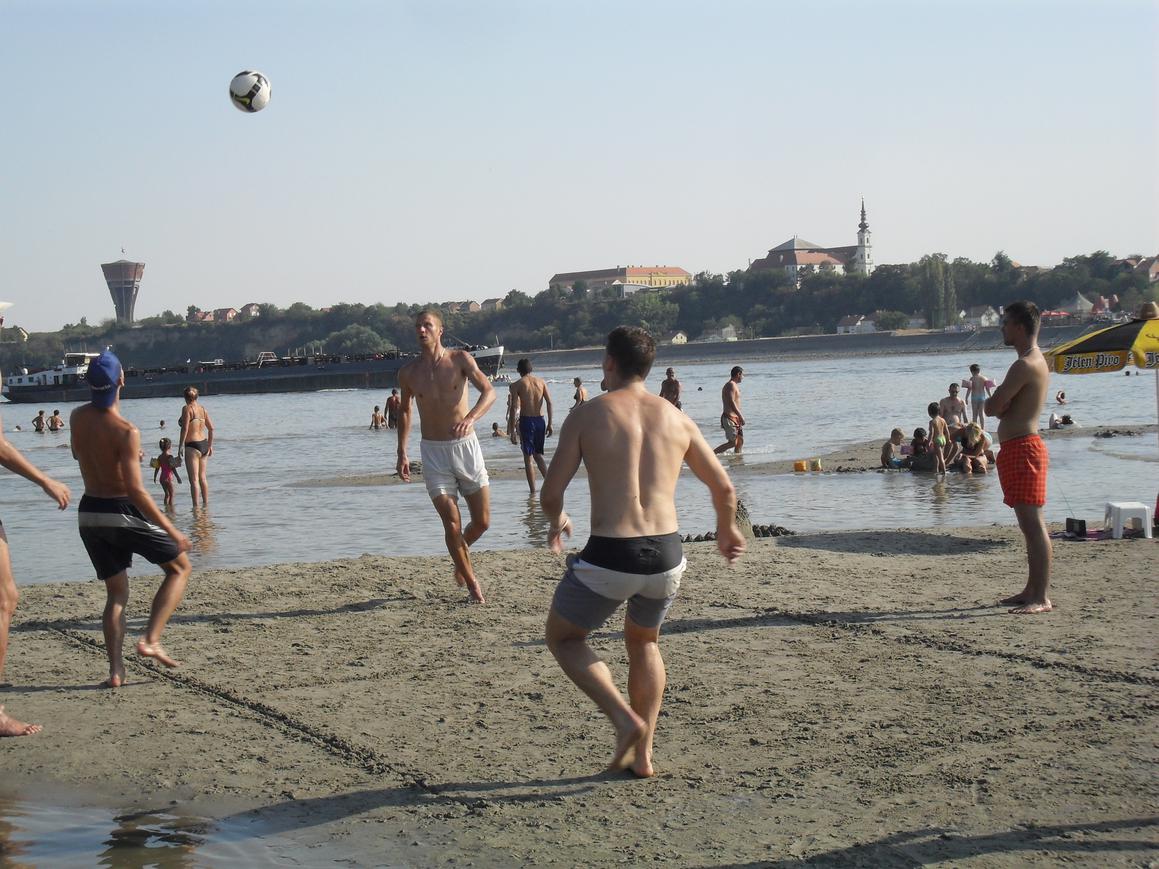
Residents of Vukovar playing beach volleyball on Ada Island (image credits: Branimir Bradarić/lokalni.hr)
Lake Orahovica near village Duzluka
Only 1500 meters away from the historic town of Orahovica, this artificial lake is probably the only proper place to swim in its radius. Last year, this famous lake celebrated its 60th birthday and it’s not stopping soon. This lake is a magnet for fun. From the most popular music festival in Slavonia Ferragosto Jam to the rich recreation offer, Lake Orahovica is an unavoidable place to visit and what’s also really important to mention, its water comes from the mountains! Besides its clear natural water, location is idyllic - just at the foot of Papuk Mountain and the historic fortified city Ružica City that, according to one legend, was a gathering place of fairies. It’s truly looking like a fairytale from Ivana Brlić-Mažuranić novels indeed.
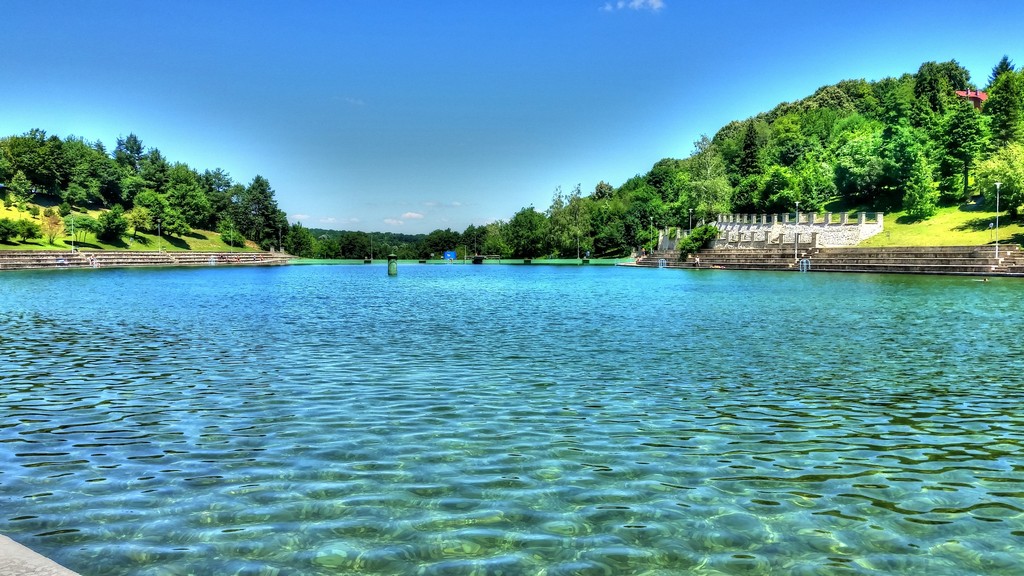
Lake Orahovica is surrounded by historic sightings and mountains (image credits: orahovica.hr)
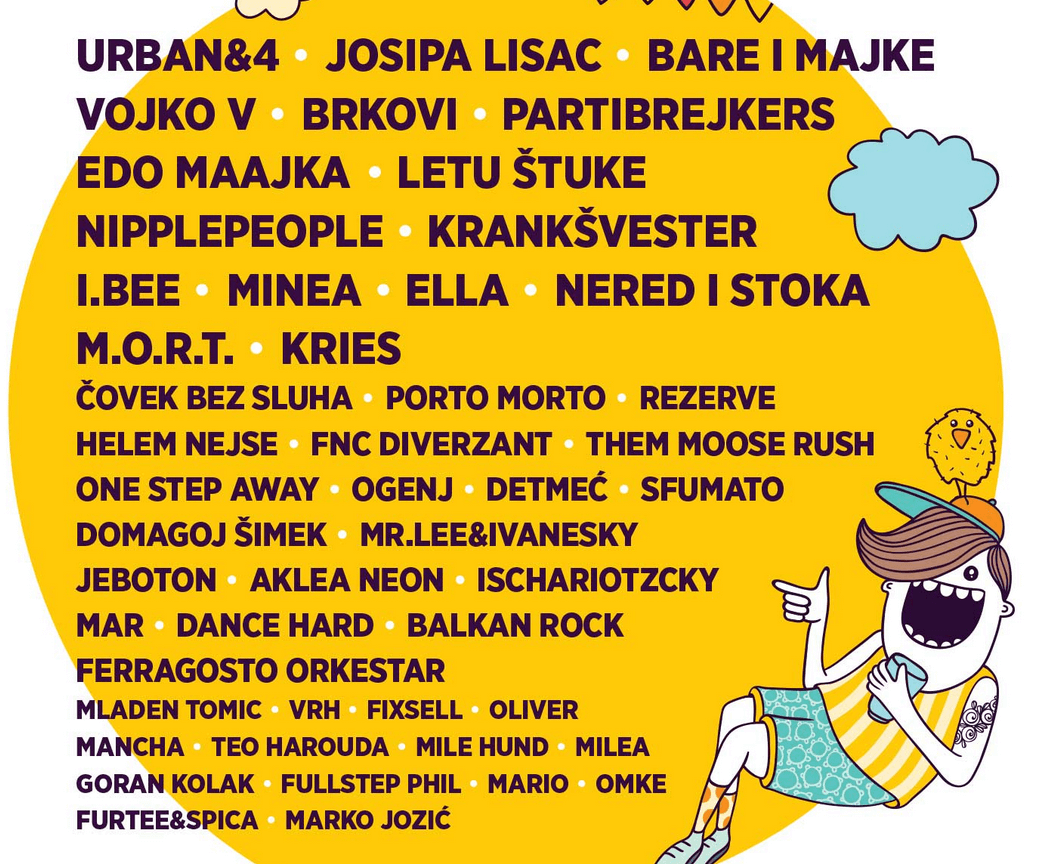
Ferragosto Jam brings the best of Croatian music every year to Lake Orahovica (image credits: screenshot/ferragostojam.com)
Honorable mentions are recently officially opened for swimmers Bajer Lake in Đakovo, Lake Borovik located west of Đakovo, natural Lake Đola in Darda near Osijek, beaches in Batina and Aljmaš where Drava River flows into Danube River, Lake Petnja, northwest of Slavonski Brod and so many more.
All of these places are rooted in Slavonians' lives. Great tourist offers and safe place for families, makes river and lake beach a must-visit during this summer. Yes, summers in Slavonia can be more insufferable than in, for example, Dalmatia (different climate), but for that, these freshwater beaches make every hot summer durable. Furthermore, it makes it the most anticipated season in Slavonia. Hopefully, this list of best beaches in Slavonia will encourage tourists to come - Slavonians will welcome you with open arms.
For more, check out our travel section.
Lanterns Floated Down the Danube in Memory of Fallen and Missing Defenders, Civilians
ZAGREB, 18 Nov 2021 - Several hundred lit red and white lanterns were floated down the river Danube on Thursday evening in memory of Croatian defenders and civilians killed or gone missing in the defense of Vukovar from the Great Serbia aggression in 1991.
Red lanterns were lit in memory of the missing persons and white lanterns for the fallen defenders and civilians.
According to data collected by the Franciscan monastery in Vukovar, 2,717 persons were killed or went missing in Vukovar in the military aggression of the former Yugoslav People's Army (JNA) and Serb paramilitary groups.
Another 386 persons are on the list of persons detained or gone missing in the Homeland War, having disappeared without a trace in wartime Vukovar.
On the occasion of Vukovar Remembrance Day, tens of thousands of persons from Croatia and Bosnia, and Herzegovina passed through the city in the Remembrance Procession on Thursday on the 30th anniversary of the collapse of the city's defense, police estimates.
For the latest news about Croatia, click here.
Iron Age Danube Route Presented
ZAGREB, 11 July 2021, 2021 - The Iron Age Danube Route was formally presented in the archaeological park Necropolis under the Tumuli in the northern town of Goričan earlier this week as the first Council of Europe certified cultural route originating in Croatia.
The Iron Age Danube Route has the great potential to contribute to the diversification of the tourism industry in continental Croatia, the presentation was told.
Sandra Herman, State Secretary at the Ministry of Tourism and Sport, said that this cultural route runs through 14 continental counties.
"Sixteen percent of tourists who come to visit continental Croatia are motivated by culture, compared to thirteen percent in coastal destinations," she said.
The Council of Europe launched the Cultural Routes programme in 1987, certifying 45 routes since then, including 14 routes that pass through Croatia, said Tatjana Horvatić, head of the Department for Movable, Ethnographic and Intangible Cultural Heritage at the Ministry of Culture and Media.
"The routes develop destinations that are not known well enough but are certainly attractive," she added.
The Iron Age Danube Route currently includes 22 members from six countries - Austria, Bulgaria, Croatia, Hungary, Germany and Slovenia.
Rudi Grula, Director of the Međimurje County Tourism Board, said that the archaeological park the Necropolis under the Tumuli is the result of the years-long Interreg project Slovenia-Croatia. The park features a regional information centre and theme workshops on the Iron Age.
For more about travel in Croatia, follow TCN's dedicated page.
For more about Croatia, CLICK HERE.
Cultural Identity of Vukovar: New Book Presented in Vukovar
June 9, 2021 - The fascinating question of the Cultural Identity of Vukovar is researched in a new book edited by Dr. Mateo Žanić and Petar Elez. However, as the editors stressed in the introduction, further research is needed to encompass all social groups in Vukovar and their contribution to the heritage of Vukovar.
After being published back in April this year, the book „Cultural Identity of Vukovar – Contribution to Investigating Heritage and Successors“, was presented this Wednesday in Vukovar. As Ivo Pilar Social Research Institute writes on its website the book was published in cooperation with the Vukovar State Archive, so it was only suitable that the first book presentation was held in Vukovar at the videoconference hall of College Of Applied Sciences „Lavoslav Ružička“ (named after a famous Croatian chemist whose work is awarded a Nobel Prize). In addition, the event marked International Archive Day.
The book was edited by Dr. Mateo Žanić and Petar Elez, and the presentation, alongside editors, saw scientific experts Dr. Dražen Živić, Mirela Hutinec, and Dr. Domagoj Tomas talks about the book.
„Fast events triggered by globalization process and information revolution which paradoxically lead to today's societies being fiercely occupied with the meaning of past, and preserving its valuable traces. In that context, there is a spreading interest for heritage that holds an important component to understand the relationship between the past and present“, says the editorial introduction of the book.
The editors went on to explain how „the city proved to be futile to interpret the meaning of heritage and its contribution to cultural identity,“ and the editors wanted to present various aspects of Vukovar's cultural heritage.
Apart from editors Žanić (who wrote a chapter „Layers of memories and material heritage in modern-day Vukovar) and Elez (author of the chapter „State archive in Vukovar and development of archive service in Vukovar-Srijem County“), the book features eight more authors. Ivan Rogić (Whose Heritage? Who is the successor?), Dražen Živić (on Vukovar's feudalists), Vlasta Novinc („Danube, food, Corso“), Dragana Drašković (on the cultural life of Borovo Selo), and more by Dragan Damjanović, Toni Roca, Ivana Bendra and Ivan Hubalek.
With these broad presentations of culture and heritage in Vukovar, editors hope this book will encourage further research as they are aware this is certainly not the final word on these interesting questions and issues.
„As editors, we are aware that the book does not deal with topics that concern different social groups that left their trace in Vukovar end enrich the history of the city. We hope that future editions that will deal with this topic expand the reach of issues and help us to realize better what do we inherit from the past and why is that important“, concludes the introduction of the book.
So far, the book is available only in Croatian, and research that will, as editors say, deal with other social groups in Vukovar is yet to come. Keeping in mind the terrible aftermaths of the war in Vukovar in the 90s and inter-ethnic tensions, further findings on joint cultural contribution to Vukovar may indeed be the enlightenment needed for peaceful cohabitation and development of Vukovar as a perspective city in Croatia.
Speaking of heritage, learn more about UNESCO recognized heritage in Croatia on our TC page.
For more about science in Croatia, follow TCN's dedicated page.
Mura, Drava, Danube Rivers Submitted to UNESCO as World's First Five Country Biosphere Reserve
October 2, 2019 - Austria, Slovenia, Croatia, Hungary, and Serbia have joined forces to make the Mura, Drava, and Danube rivers the world’s first five-country biosphere reserve.
HRTurizam reports that the joint nomination of Austria, Slovenia, Croatia, Hungary, and Serbia, sent to UNESCO on September 30, is the final step to proclaiming the Mura-Drava-Danube the world’s first five-country biosphere reserve. UNESCO certification is expected in June 2020.
The Mura, Drava, and Danube rivers, which flow through five countries, form a 700 km long green belt and connect over 930,000 hectares of unique area with significant natural and cultural heritage, creating the so-called European Amazon.
“This cross-border nomination is a strong indicator of strengthening regional cooperation and unifying countries with the unique objective of protecting nature. Working on a joint nomination is a great example of interstate cooperation on such an important issue,” said Petra Remeta, Director of WWF Adria's Nature Conservation Program.
The core and impact area of the biosphere reserve extends to 280,000 hectares and includes 13 protected areas and is surrounded by 650,000 hectares of the transition area. Rare flooded forests, sand and gravel shoals, river islands and backwaters form a unique river and cultural landscape. Also, Europe's Amazon is home to Europe's largest population of white-tailed eagles, as well as other endangered species such as small terns, black storks, otters, beavers, and sturgeons. It is also an important area for more than 250,000 migratory birds.
Not only is it home to numerous plant and animal species, but nearly 900,000 people depend on the Mura, Drava, and the Danube. Floodplains protect the settlements from flooding and secure drinking water supply, while exceptional river landscapes increase the potential for sustainable tourism.
"The designation of a biosphere reserve is an important departure from harmful projects such as the construction of new hydropower plants or the extraction of sediment. Sustainable coexistence of humans and nature is the direction we must go if we are to mitigate the inevitable consequences of climate change, which we are already feeling,” said Ivana Korn Varga of WWF Adria.
The Five-Country Biosphere Reserve project is valued at 14 million euros, is co-financed by the European Union, and contributes to the protection of nature and the development of the whole area. Thus, as part of the coop MDD initiative, the cooperation of protected areas in all five countries was established with a view to cross-border management, while the focus of the European Amazon Bike Trail project develops a sustainable cycling tourism model. On the other hand, concrete river revitalization measures are being implemented through different projects to create new habitats and recreational zones along the rivers.
The joint nomination is the result of the work of the Ministries and Public Institutions for Nature Conservation of Austria, Slovenia, Croatia, Hungary and Serbia, the UNESCO Human and Biosphere Commissions, as well as the efforts of WWF, EuroNatur and many other nature protection organizations in all five countries.
To read more about lifestyle in Croatia, follow TCN’s dedicated page.


